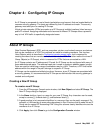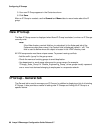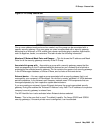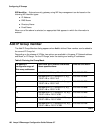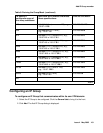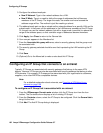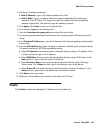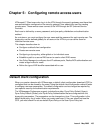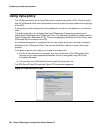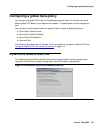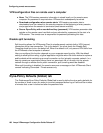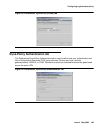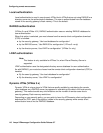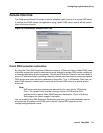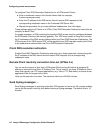
Issue 4 May 2005 105
Chapter 5: Configuring remote access users
VPNremote™ Client users who log in to the VPN through the security gateway must have their
user authentication configured on the security gateway. User objects are used for creating
remote users. Those remote users connect to the VPN through an ISP (Internet Service
Provider).
Each user is defined by a name, password, and dyna-policy distribution and authentication
method.
As a minimum, you must configure the user name and the password for each remote user. The
dyna-policy can be defined globally for all users on the VPN or you can define them for
individual remote users.
This chapter describes how to:
● Configure a default client configuration
● Create new remote users
● Configuring a dyna-policy, either global or for individual users
● Establish a path to a secure DNS server to resolve client DNS names
● Use Policy Manager to configure client IP address pools, Radius/ACE authentication and
create a legal notice for users
● Define the type of IKE identifier associated with a user
Default client configuration
When you create a domain with VPNmanager, a default client configuration download (CCD) is
configured that can be shared by the users. Using the default client configuration makes it faster
to configure new user parameters. The default configuration can be changed as required by
your specific security and authentication requirements.
The VPNmanager Preferences property includes three tabs, Dyna-Policy Default (Users),
Dyna-Policy Default (Global), and Dyna-Policy Authentication that are configured with the
dyna-policy parameters. The parameters can be changed any time. This configuration is the
default dyna-policy for all users. When you create new users, if the user should not use the
CCD, you must check Do not use default Dyna-Policy on the User Dyna-Policy tab.



